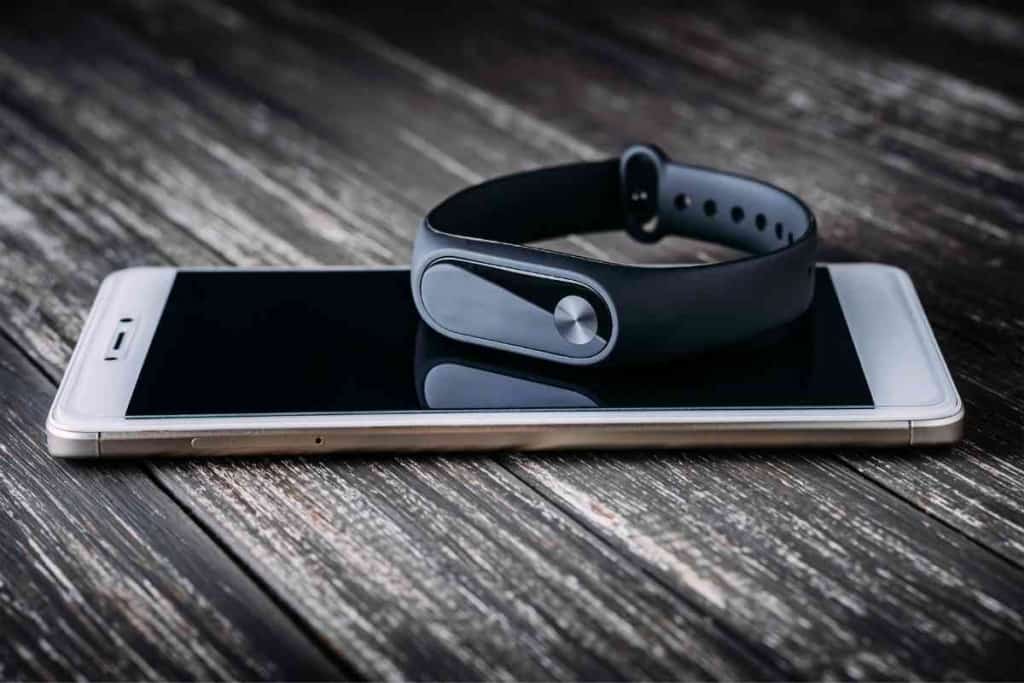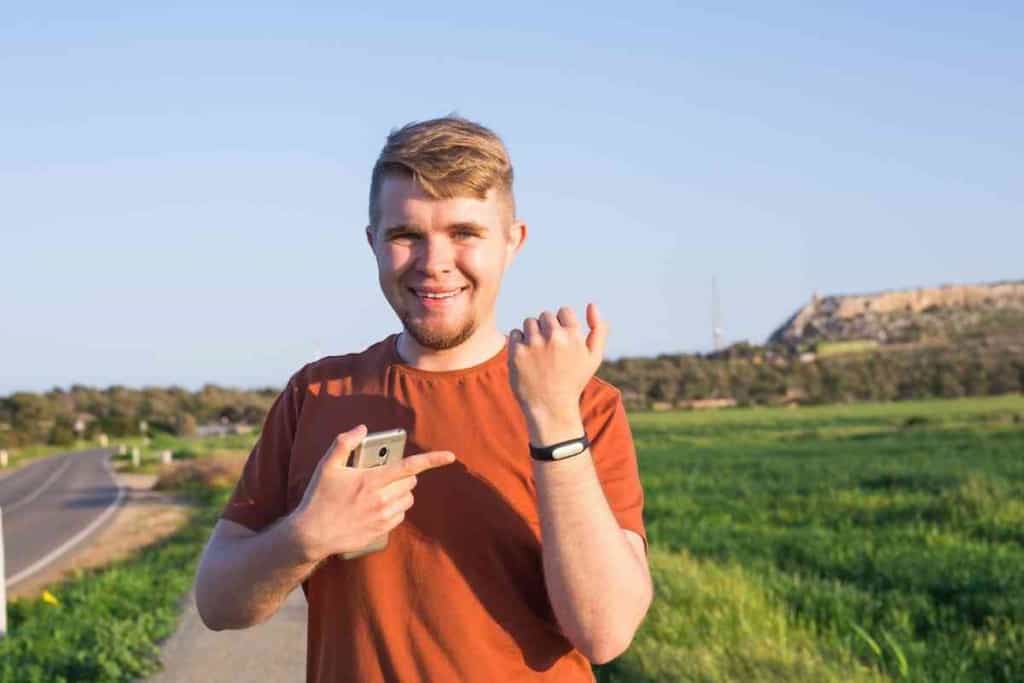Do Fitbits Work Without A Phone? Your Guide to Hands-Free Fitness
You know that moment when you’re heading out for a run and realize you left your phone at home? If you’re wearing a Fitbit, you might wonder if your workout will even count without your phone by your side. It’s a totally fair question, especially since so many fitness trackers seem glued to our smartphones these days.

Yes, your Fitbit will track your steps, heart rate, and most activities just fine without your phone nearby. Fitbit devices can track health data independently, storing everything right on the device itself. Think of your Fitbit like a little computer on your wrist that keeps working whether your phone is in your pocket or sitting on your kitchen counter.
But here’s where it gets interesting. While your Fitbit doesn’t need your phone to do its main job, there are some cool features you’ll miss out on when you go phone-free. Many commonly used Fitbit features require cellular data to work at their best. Don’t worry though – we’ll walk through exactly what works, what doesn’t, and how to make the most of your Fitbit whether you’re team phone-free or prefer staying connected.
How Fitbits Work When You Don’t Have Your Phone
Your Fitbit becomes a standalone fitness tracker that keeps working even when your phone is nowhere to be found. It stores days worth of data internally and tracks most of your key health metrics without missing a beat.
What Fitbits Can Track on Their Own
Your Fitbit is like a mini computer on your wrist that doesn’t need your phone to do its main job. It tracks your steps, distance, and calories burned all by itself using built-in sensors.
Basic tracking features that work solo:
- Steps and distance walked
- Calories burned throughout the day
- Active minutes and hourly activity
- Sleep patterns and sleep stages
- Heart rate monitoring (on models with heart rate sensors)
The heart rate monitor keeps working 24/7 without your phone. Your Fitbit can track your heart rate even when you’re completely disconnected from any device.
Your sleep tracking also works great on its own. The fitness tracker monitors when you fall asleep, how long you sleep, and what sleep stages you go through. You’ll see all this data once you sync up later.
What won’t work without your phone:
- GPS tracking for runs or walks
- Text and call notifications
- Music controls
- Real-time data viewing on the app
Think of your Fitbit like a digital diary that keeps writing even when no one’s reading it.
How Long Fitbits Store Your Data
Your Fitbit has built-in memory that acts like a tiny storage unit for your health data. Most Fitbit models can store data internally for about 7 days before they start overwriting old information.
Storage capacity by data type:
- Step data: Up to 30 days
- Heart rate data: Up to 7 days
- Sleep data: Up to 7 days
- Exercise sessions: Up to 7 detailed workouts

This means you could go on a week-long camping trip without your phone and not lose any important fitness data. Your Fitbit keeps everything safe until you get back to civilization.
The device stores minute-by-minute data, not just daily totals. When you finally sync with the app, you’ll see your heart rate patterns, sleep stages, and activity throughout each day you were disconnected.
If you go longer than 7 days without syncing, your Fitbit starts replacing the oldest data with new information. It’s like having a rolling week of detailed health tracking in your back pocket.
Which Fitbit Models Handle Independence Best
Not all Fitbit devices are created equal when it comes to working without your phone. Some models shine as standalone fitness trackers, while others really need that phone connection.
Best standalone performers:
- Fitbit Charge series: Great battery life and comprehensive tracking
- Fitbit Versa series: Stores music locally and has built-in GPS on some models
- Fitbit Sense series: Advanced health sensors work independently
The Charge models are particularly good for seniors without smartphones because they focus on essential health tracking rather than smart features.
Models that need more phone support:
- Basic Fitbit Inspire models (limited storage)
- Older Fitbit models (less internal memory)
Your newer Fitbit models handle independence much better than older ones. They have more storage space, better sensors, and longer battery life to keep tracking when you’re phone-free.
The key difference is internal storage and sensor quality. Newer fitness trackers pack more computing power into that small device on your wrist, making them mini health computers that happen to sync with your phone rather than depend on it.
Syncing, Setup, and Getting Around Phone-Free Limitations
You can absolutely set up your Fitbit without a smartphone, though it takes a bit more creativity. Your computer becomes your best friend for initial setup, and while you’ll miss some app-only features, the core fitness tracking still works like a charm.
How to Set Up Fitbit Without a Smartphone
Setting up your Fitbit without a smartphone is totally doable, but you’ll need to think outside the phone box. Your Fitbit device can walk you through the basics right on its screen.
Start by charging your device fully. Most newer Fitbits will guide you through connecting to Wi-Fi and creating your Fitbit account directly on the device screen.
You’ll still need internet access somewhere. If you have a tablet, computer, or can borrow a friend’s phone for the initial setup, that works perfectly.
The sneaky workaround: Some folks download the Fitbit app, create an account, add their tracker, then delete the app. Your device stays connected to your account even after the app is gone.
Once you’re past the initial hurdle, your Fitbit becomes surprisingly independent. It tracks steps, heart rate, sleep, and calories without needing constant phone contact.
Using Fitbit Connect, Dongles, and Computers Instead
Remember when everything synced through your computer? Those days aren’t completely dead. Fitbit Connect lets you sync data directly to Fitbit’s servers without touching your phone.
Download Fitbit Connect from the Fitbit website onto your computer. It’s free and works on both Windows and Mac.
What you’ll need:
- A computer with internet
- Your Fitbit’s charging cable
- The Fitbit Connect software
Some older Fitbit models came with wireless dongles. These little USB sticks let your computer talk to your Fitbit wirelessly. Think of it like Bluetooth, but for computers that don’t have built-in Bluetooth.
The sync happens automatically when you’re within about 20 feet of your computer. Your data uploads to your Fitbit account, so you can check your stats on the Fitbit website anytime.
What Features You’ll Miss (and Which Still Rock)
Let’s be real about what changes when you use your Fitbit without the app. Some stuff just won’t work, but plenty still does.
What keeps working:
- Step counting and distance tracking
- Heart rate monitoring
- Sleep tracking
- Basic workout detection
- Built-in GPS (on models like Charge 4 and Versa 3)
- Timer and alarm functions

What you’ll miss:
- Detailed insights and trends
- Food logging
- Social challenges with friends
- Smartphone notifications
- Music control
- Quick replies to messages
Your Fitbit’s screen shows basic daily stats. You can see steps, calories, heart rate, and distance right there on your wrist.
The biggest limitation? You lose those detailed weekly and monthly reports that help you spot patterns. But if you just want to know “did I move enough today?” your Fitbit has you covered completely.